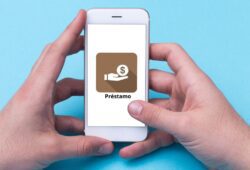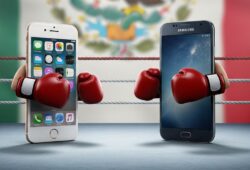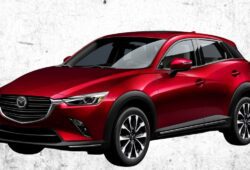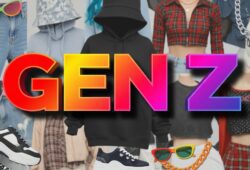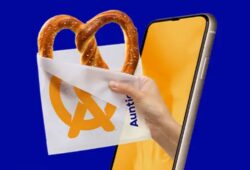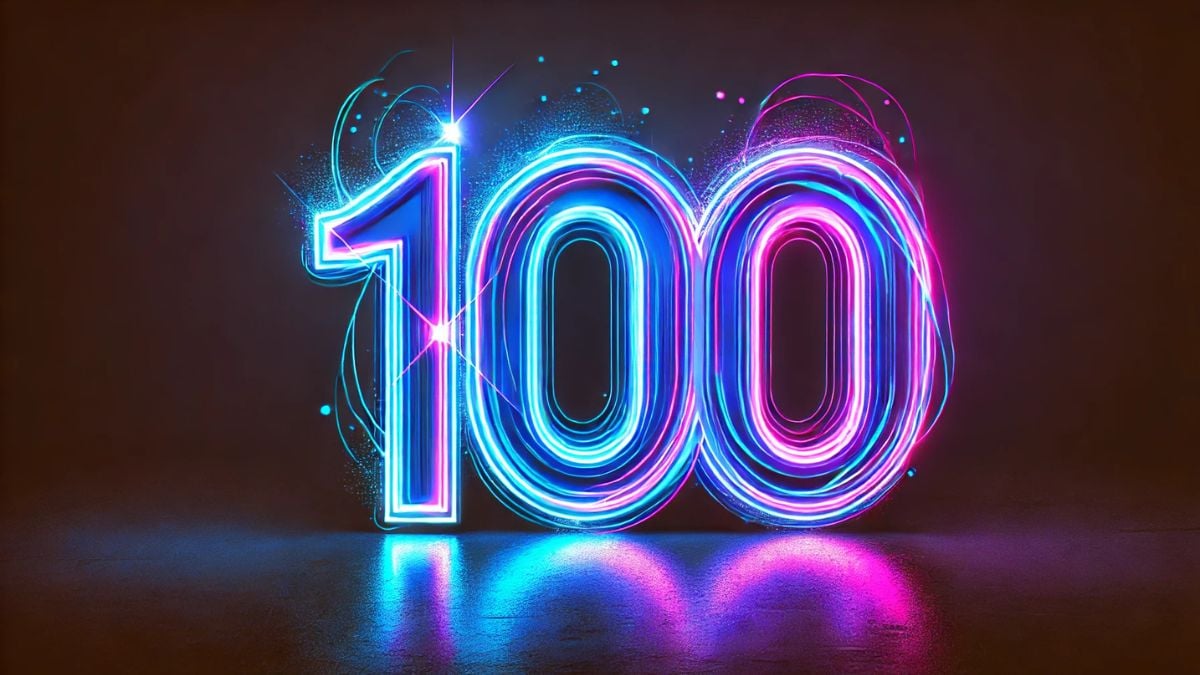
The global marketing data and analytics consultancy Kantar has released the 20th edition of its influential BrandZ Most Valuable Global Brands ranking, considered the most authoritative worldwide. This classification is based on a combination of consumer perception and financial performance, and in 2025 it reaches a historic milestone: the total brand value surpasses $10.7 trillion, with an annual growth of 29%.
Regarding the ranking, Martin Guerrieria, Head of Kantar BrandZ, emphasized that: “Even during economic crises, the most valuable brands have consistently outperformed the S&P 500 and the MSCI World Index for 20 years. This proves that marketing is not an expense, but an essential investment.”
ALSO READ. Why should marketing investment be constant? The high cost of cutting back
Guerrieria argues that successful brands are those that manage to be meaningfully different, maintain a consistent presence, and emotionally connect with people. This allows them to withstand price increases without losing demand, which is crucial in inflationary contexts.
ALSO READ. CFO vs. CMO: The disagreement that can kill your marketing budget
Which brand tops Kantar’s 2025 ranking?
Apple holds the first place for the fourth consecutive year, with an estimated value of $1.3 trillion, representing more than 12% of the total value of the Top 100. It remains the only “trillion-dollar” brand on the list, thanks to its closed ecosystem, focus on privacy, and meaningful differentiation—elements that make consumers willing to pay more without affecting demand.
What are the 100 most valuable brands in the world?
According to the Kantar BrandZ 2025 ranking, the 100 most valuable brands in the world are:
🔝 Top 100 Most Valuable Brands 2025 – Brand and Value (in thousands of dollars)
- Apple – $1,299,655 M
- Google – $944,137 M
- Microsoft – $884,816 M
- Amazon – $866,118 M
- NVIDIA – $509,442 M
- Facebook – $300,662 M
- Instagram – $228,947 M
- McDonald’s – $221,079 M
- Oracle – $215,354 M
- Visa – $213,348 M
- Tencent – $174,005 M
- Mastercard – $167,882 M
- IBM – $125,973 M
- Coca-Cola – $119,979 M
- Walmart – $119,580 M
- Netflix – $115,271 M
- Louis Vuitton – $111,938 M
- Hermès – $109,421 M
- Telekom/T-Mobile – $105,717 M
- Accenture – $103,810 M
- Costco – $100,809 M
- Aramco – $93,554 M
- SAP – $92,347 M
- Verizon – $90,490 M
- The Home Depot – $89,230 M
- YouTube – $89,110 M
- AT&T – $86,878 M
- Tesla – $86,043 M
- Alibaba – $81,208 M
- Adobe – $80,759 M
- LinkedIn – $76,636 M
- TikTok – $75,669 M
- Moutai – $74,446 M
- Starbucks – $69,732 M
- Salesforce – $69,503 M
- Cisco – $68,268 M
- American Express – $65,886 M
- Snapdragon – $65,632 M
- Huawei – $64,657 M
- Marlboro – $64,101 M
- ServiceNow – $62,481 M
- Chanel – $62,292 M
- Texas Instruments – $59,863 M
- Intuit – $59,009 M
- Tata Consultancy Services – $57,333 M
- ADP – $56,969 M
- AMD – $56,629 M
- UPS – $55,007 M
- J.P. Morgan – $50,697 M
- Mercado Libre – $49,846 M
- Nike – $49,444 M
- Disney – $48,665 M
- Chase – $48,117 M
- Haier – $47,578 M
- VMware – $47,076 M
- HDFC Bank – $44,959 M
- Uber – $44,197 M
- Wells Fargo – $44,196 M
- RBC – $44,179 M
- ChatGPT – $43,562 M
- Xbox – $43,047 M
- China Mobile – $41,299 M
- Spectrum – $40,037 M
- Intel – $37,390 M
- Zara – $37,246 M
- Airtel – $37,094 M
- Siemens – $36,390 M
- Xfinity – $36,069 M
- Dell Technologies – $35,446 M
- UnitedHealthcare – $35,238 M
- L’Oréal Paris – $35,090 M
- ICBC – $33,915 M
- Infosys – $33,096 M
- CommBank – $32,093 M
- Lowe’s – $30,859 M
- Spotify – $29,687 M
- Toyota – $29,329 M
- Samsung – $29,253 M
- BCA – $28,749 M
- Meituan – $27,925 M
- Bank of America – $27,524 M
- PayPal – $27,228 M
- KFC – $26,875 M
- Ping An – $26,326 M
- Stripe – $26,127 M
- Chipotle – $26,125 M
- IKEA – $25,673 M
- ExxonMobil – $25,544 M
- Booking.com – $25,060 M
- Morgan Stanley – $24,784 M
- FedEx – $23,978 M
- Sony – $23,858 M
- Agricultural Bank of China – $23,550 M
- ALDI – $23,386 M
- Hilton – $23,000 M
- Xiaomi – $21,917 M
- Uniqlo – $21,599 M
- Adidas – $21,067 M
- DoorDash – $20,880 M
- Mercedes-Benz – $20,815 M
The rise of NVIDIA (ranked fifth) is particularly notable, with a 152% increase in its value thanks to its leadership in developing chips for generative artificial intelligence.
READ ALSO. Top 10 Marketing Skills for 2025 (According to Global CMOs)
How have the most valuable brands changed over the past 20 years?
Since 2006, the global brand landscape has changed dramatically:
- U.S. brands now represent 82% of the total Top 100 value, up from 63% in 2006.
- Chinese brands have doubled their value, reaching 6% of the total.
- European brands have lost share, dropping from 26% to 7%.
This geopolitical shift in global branding is linked to tech innovation, international expansion strategies, and the impact of trade tensions such as tariffs between China and the U.S.
READ ALSO. How to avoid the KPI trap: the art of not measuring just to measure
What new or emerging brands appear in the ranking?
The 2025 list reflects the rise of disruptive and tech-driven brands:
- ChatGPT debuts at rank 60, the highest entry since NVIDIA in 2021.
- Stripe and Chipotle enter for the first time at positions 85 and 86.
- Spotify (Sweden) reappears at rank 76.
- Mercado Libre (Argentina) ranks 50th, the only Latin American brand on the list.
- Airtel (India) is the fastest-growing telecom brand globally.
What role do social media and AI play in brand value?
Instagram and TikTok posted growth rates of 101% and 25%, respectively. This shows how social media continues to shape consumer habits and drive direct sales through e-commerce, for both brands and content creators.
In the field of artificial intelligence, OpenAI with ChatGPT has triggered a cultural transformation. However, Kantar warns it must invest heavily in its brand to maintain a competitive edge against giants like Google and Microsoft.
Which sectors gained and which lost value in 2025?
📈 Growing sectors:
- Retail: Brand value grew 48% thanks to e-commerce boom and private labels.
- Enterprise tech and service platforms: Led by NVIDIA, Microsoft, and Accenture.
- Finance: Companies like American Express, J.P. Morgan, and RBC showed strong growth.
📉 Declining sectors:
- Personal care: Dropped 5%, despite exceptions like L’Oréal and Dove.
- Food and beverages: Fell 1%, though Coca-Cola remains strong.
- Apparel: No global growth recorded.
- Alcohol: Declined 11%, driven by younger generations’ shift toward low-alcohol or healthy drinks.
- Luxury: Dropped 2% due to lower demand in China and a shift toward experiences over status symbols.
Which non-U.S. brands stand out in the Top 100?
There are no Mexican brands in the 2025 Top 100. However, notable entries from other countries include:
- Spotify (Sweden) – Re-enters at rank 76.
- Mercado Libre (Argentina) – Only Latin American brand, ranked 50th.
- Zara (Spain) – Climbs five spots to rank 65.
- RBC (Canada) – Strongest financial brand growth outside the U.S.
- Airtel (India) – Fastest-growing telecom worldwide.
- Huawei and Alibaba (China) – Maintain relevance despite geopolitical tensions.
- Sony and Uniqlo (Japan) – Remain key players in tech and fashion.


